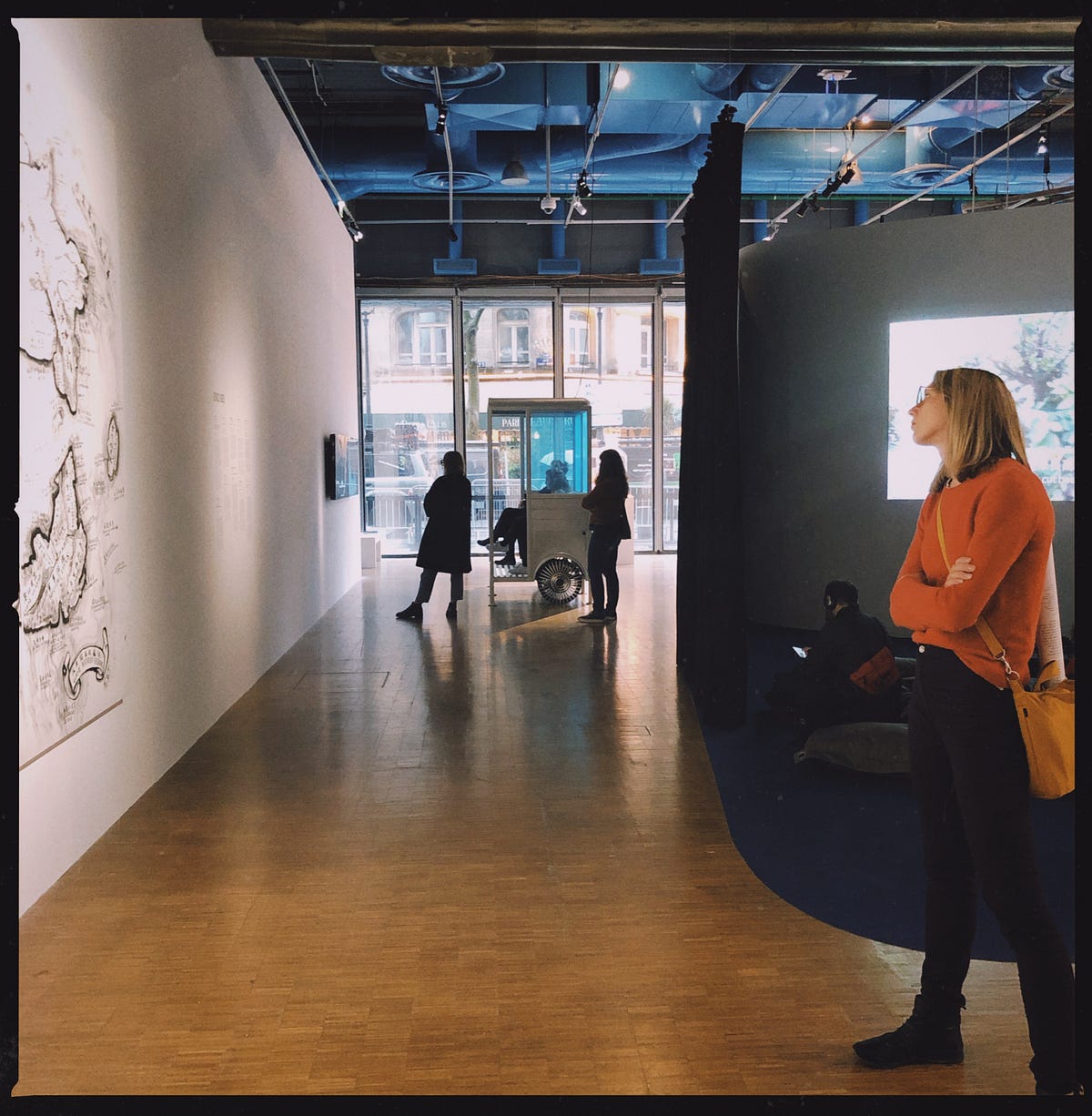
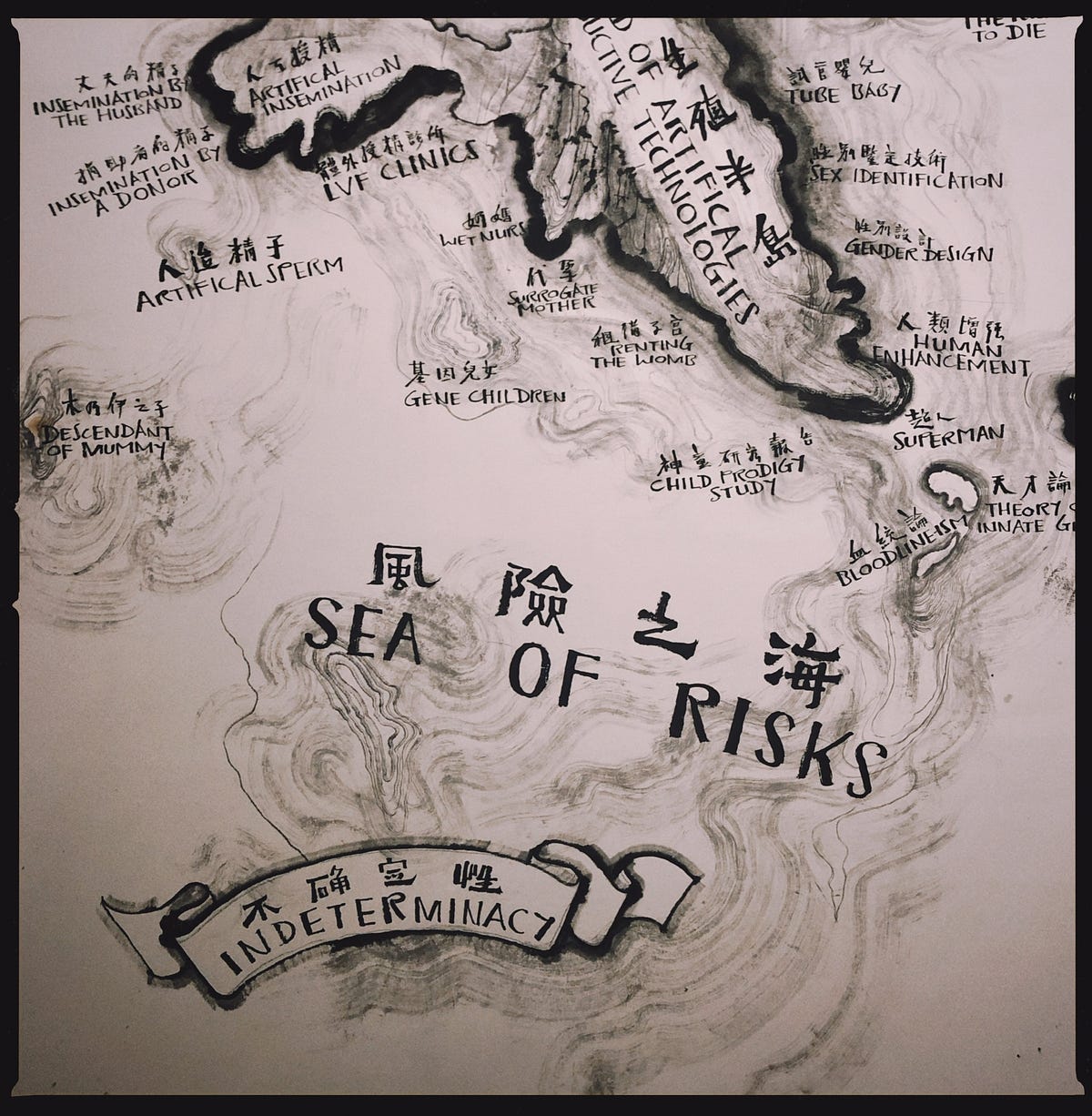
The ability to do great work in the face of the unknown is one of the essential skills creative leaders, product makers, and forward thinkers must master. We need the artist’s skill of working in the unknown as we push on technology to make new products, companies, and ideas a reality.
The artist mindset is one of doing work in the face of uncertainty.
The process of art exemplifies the challenge of doing what’s not been done, breaking rules and curious pioneering.
Innovation, Like Art, Is A Process
“Artwork” as we call it appears a bit of a misleading term. “Art result” maybe a better-suited word, but it rolls off the tongue oddly. Most artwork is invisible. Art working is a process, and the best artwork often sparks conversation anew when it’s seen.
In Paris, the Centre de Pompidou holds the most extensive collection of Modern Art in Europe. Works from the 1860s to the 1970s fill seven floors. The building itself is a modern work of art — the inside-out building has all the ductwork, power, and water piping outside the building.
I got to enjoy this fantastic collection of artifacts in Paris. In the last room of the sixth floor of the inside-out building, I was engulfed by the neon periwinkle blue canvas by Yves Klien. Staring at it, I had a clear insight, “my feet hurt.”
After 50 rooms of modern art, it became more art than I could handle. I couldn’t process any more colorful squares and misshapen figures. All the inspiration I could take was taken. If the paintings had more to say, I couldn’t hear them anymore. It was not my eyes or aching feet, but it was my mind that was honestly spent.
I suppose one could physically see all the art in the Pompidou in a day. Yet, the mental capacity to see it all would take away from deeper considerations of a few items that stand out.
What impressed upon me while viewing this vast collection of work is wild unknowing of whether any of it would resonate. For every piece on the wall, many more failures lurk in the garbage of discarded sketches and ill-received works. For every masterpiece hung, there were stories of struggling to work in the unknown. Even Picasso had work rejected by curators.
The walls in the inside-out building are covered in the artifacts of the past process and lessons for innovators. I wonder what artifacts of my digital works will last to inspire others? How much work do I need to pile up in the hard drive before I’ve made something “good”?
Inside us, creative leaders is the drive to keep working in the unknown with no guarantee of success. The process of working in the unknown is the domain of art and innovation alike.
Powerful Stories Are Discovered From Working In The Unknown
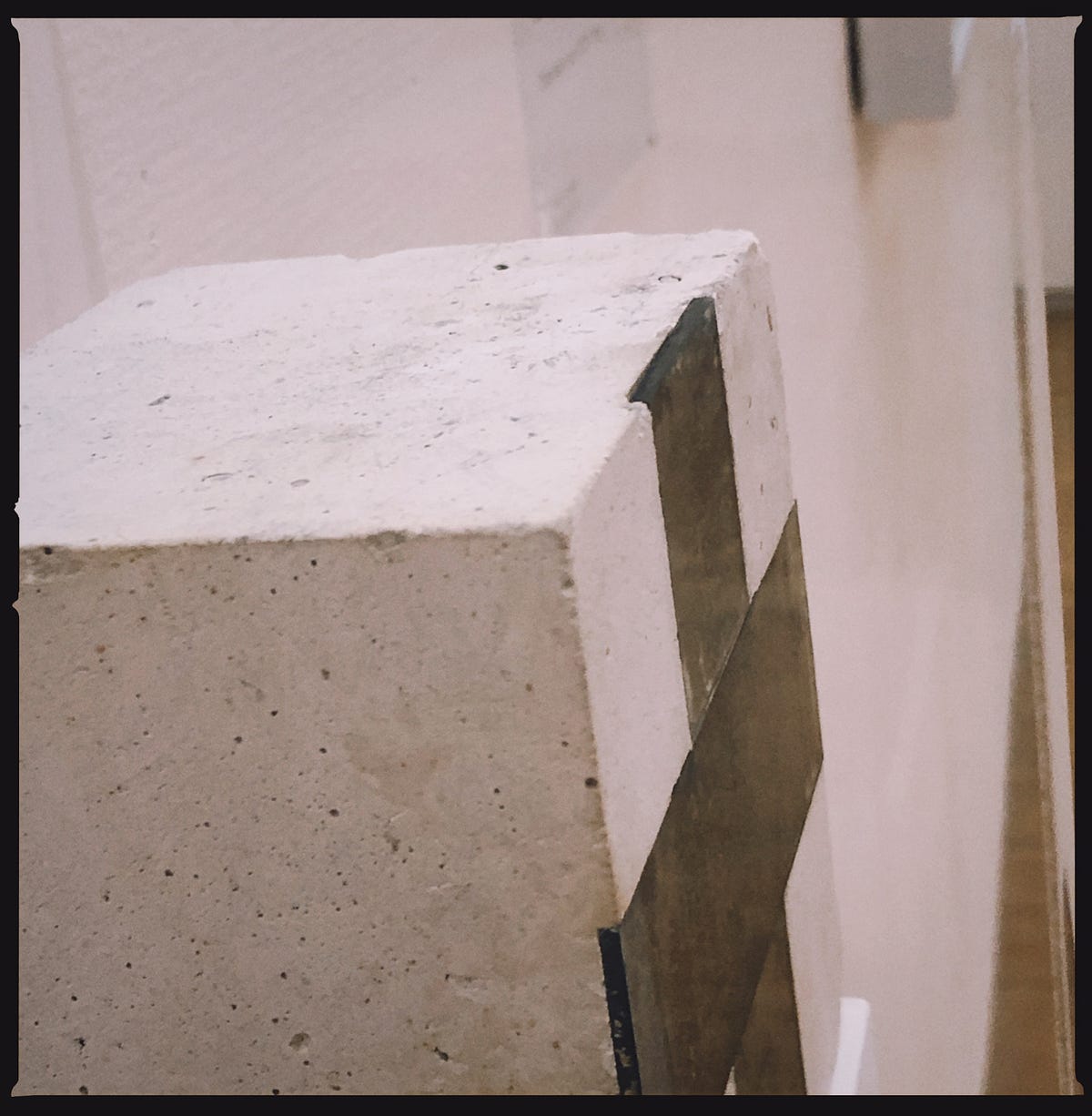
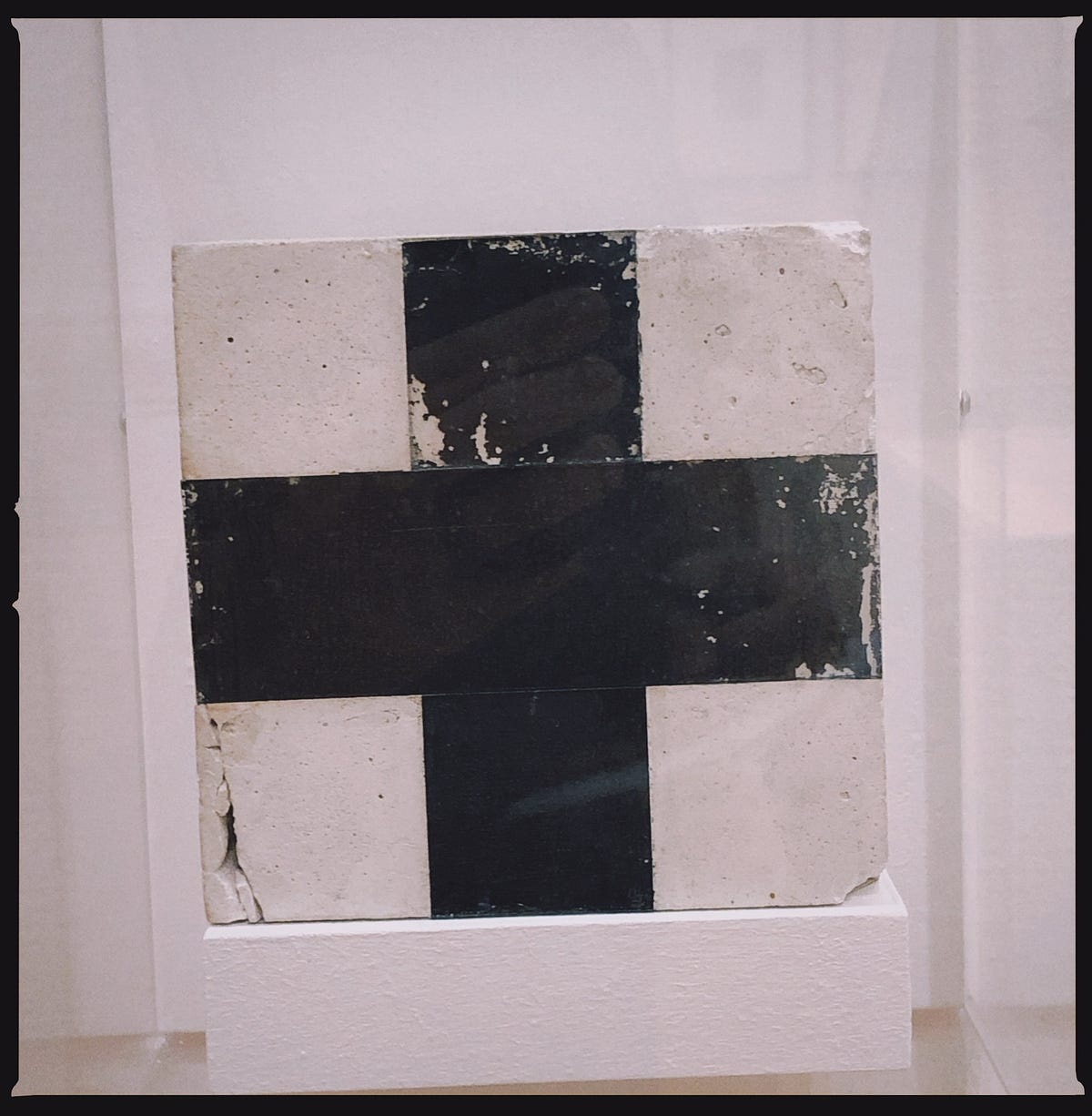
Working in the unknown means not knowing if what you do will work and putting it out into the world anyway. Art is an act of risk against fear. This is a key part of what makes artists artists — risk.
Risk is a common companion of innovators and business leaders, always grappling with how much risk can be carried.
Creating in the face of the unknown is a wonderful place to make discoveries — and it requires the sacrifices of leaving behind what we know works.
While in the Pompidou (a building with lots of art) one painting that especially caught my attention was the Black Square. “Oh! Odd,” I thought… “this was considered art.” Alone, it’s a curious object. In photos, not too impressive — but the magic happens in its story.
Art scholars and art historians layer the Black Square with meaning — the Zero Point of Art. Others say it’s a joke.
The Black Square was one of three painted by Kazimir Malevic — the first in 1915 and the last in 1933 just before Stalin outlawed abstract art, forcing all soviet artists to abandon abstract art. Everything Malevich painted in public after was real-ish, and yet he still signed paintings with a black square. Each of the three black squares is in a different gallery around the world.
On the 100-year anniversary, The Russian Museum of Art x-rayed one of the Black Squares and found that there is evidence of three paintings under the black layer. Is this a story of Ukrainian artists’ work about Russian censorship?
The blacked-out square from 1915 is similar to the censorship protests online in 2017 in which social media profile photos were changed to black squares and website headers became black bars. And more recently Black Lives Matter. The Black Square has meaning in the story around it.
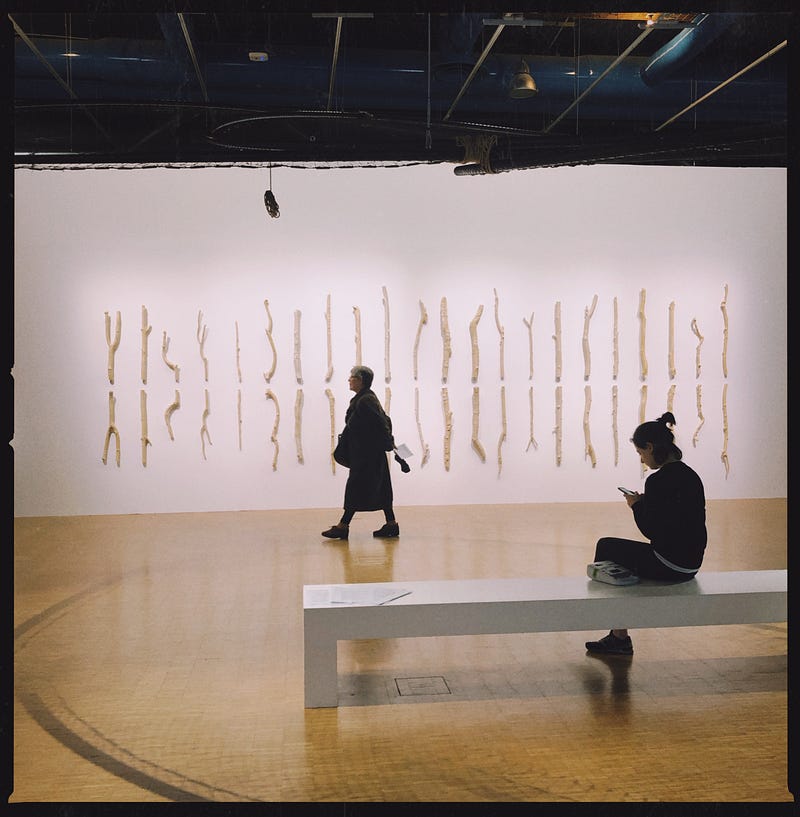
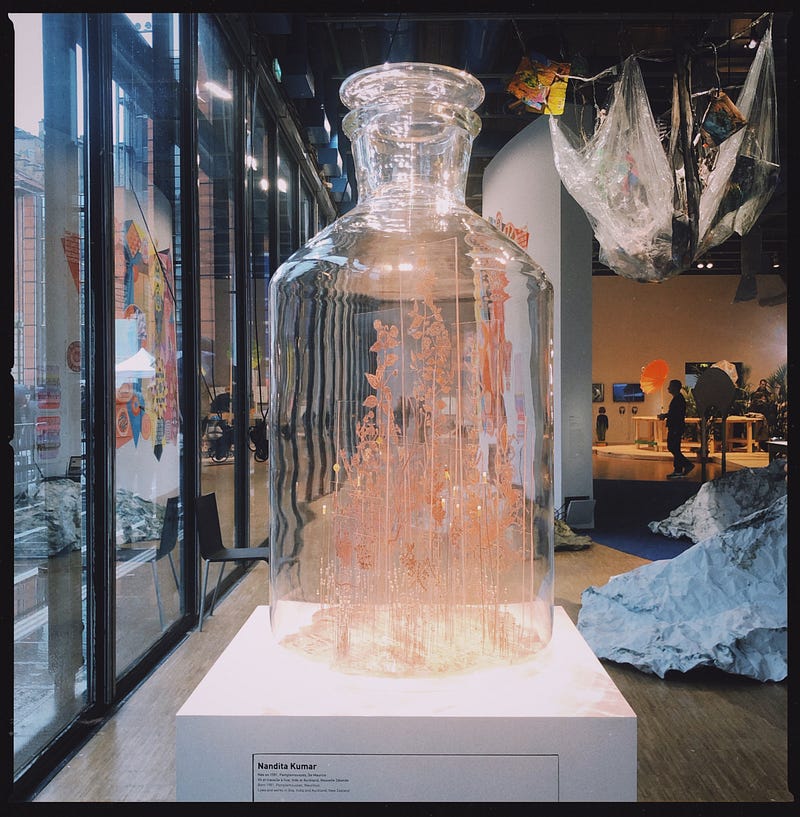
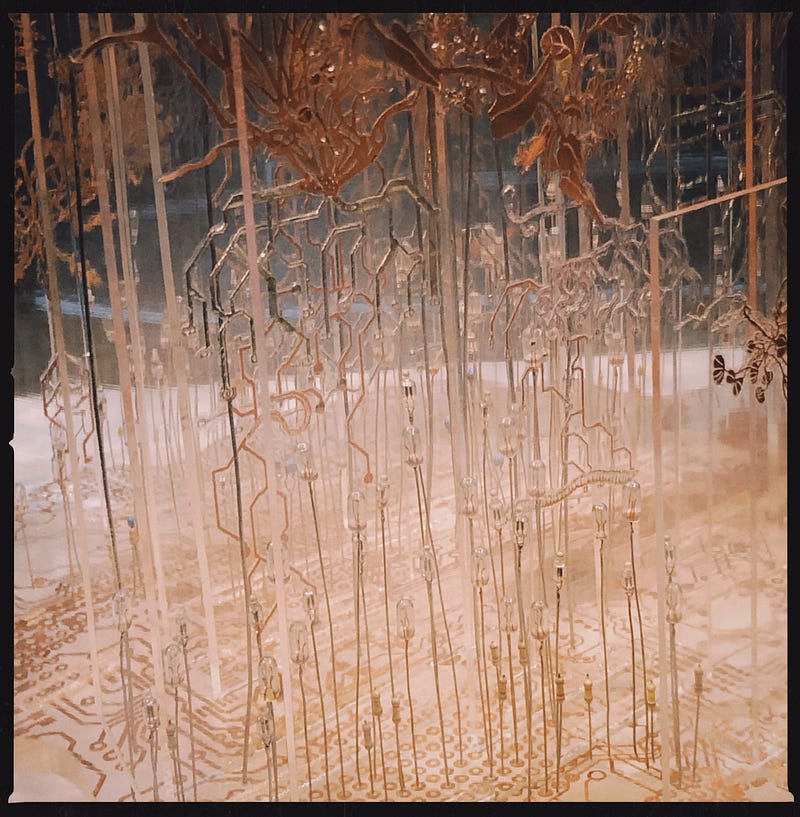
Stories Allow Us to Navigate The Unknown
Johnathan Gottschall wrote in his book Storytelling Animals that story is such a core part of being human that we make everything into story. We are great at confabulation; we tell ourselves lies to fill in the gaps of understanding so that the world makes sense to us.
When we put our work and ideas into the world, not only do we not know if our approach, design, product, or company will resonate, but we don’t know what stories people will make to create their own meaning.
Artists put work into the world not knowing if it will work for an audience that doesn’t expect it.
Working In The Unknown Is A Decision
I can’t help but think that these artists consistently worked in the unknown of their time, risking visual and conceptual standards to provoke new conversations.
When we embrace that life is an unknown process and decide to put what we make into the world despite fears, we can open the door to breakthrough insight, community, and discovery.
To innovate requires you to master the artist’s skill of working in the unknown.